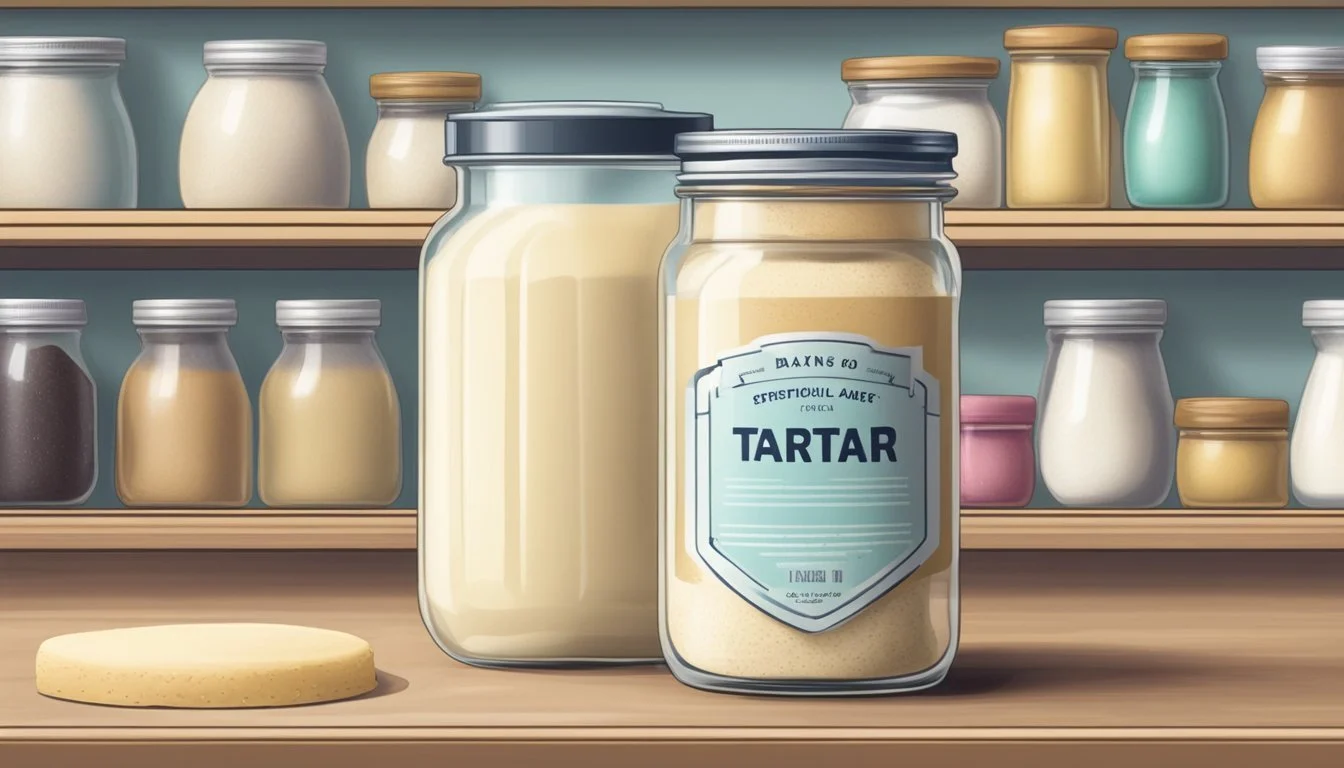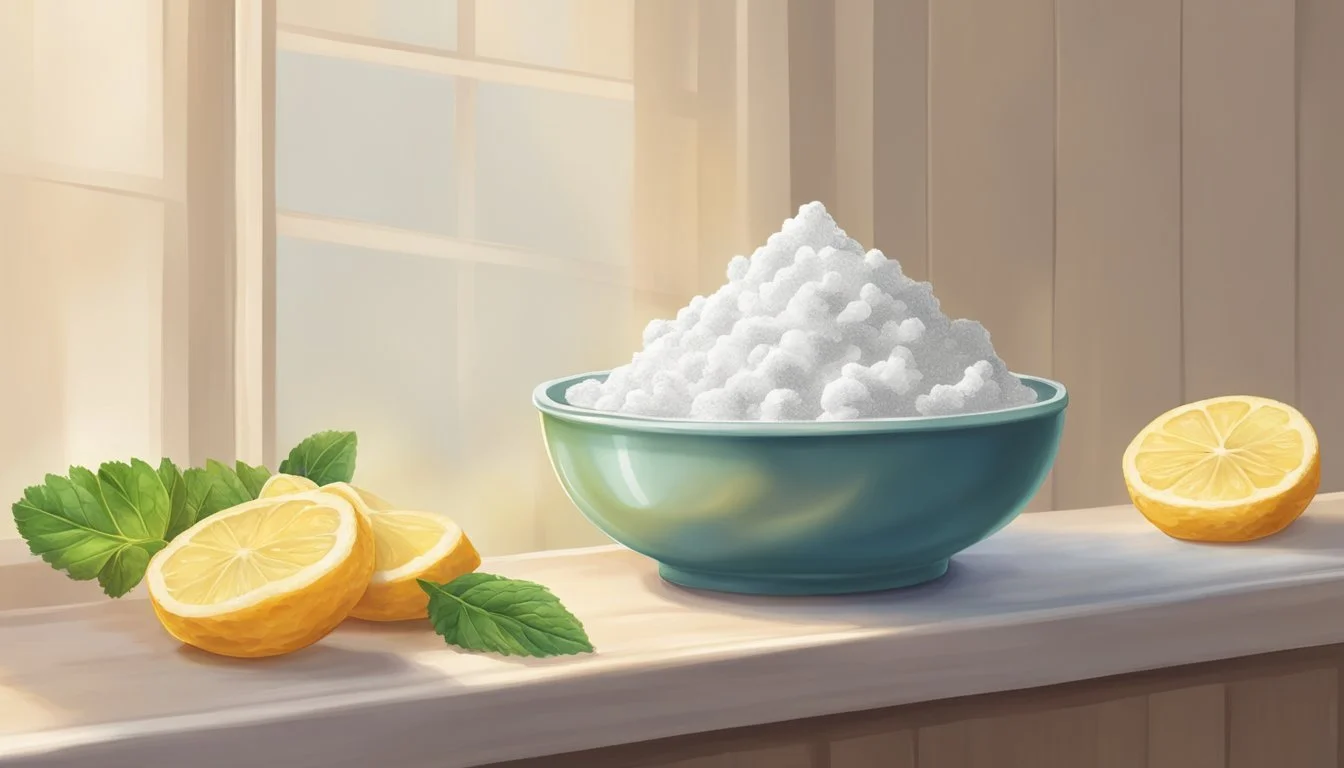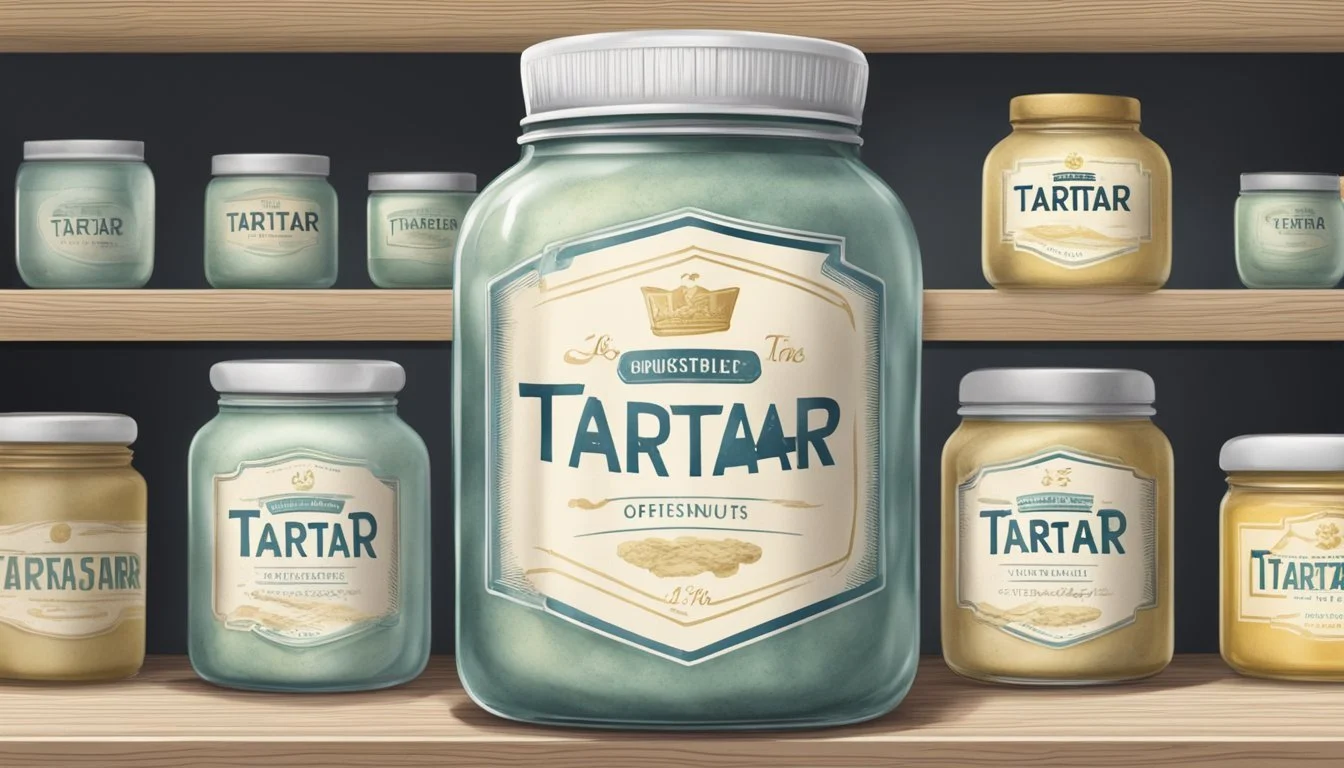How Long Does Cream of Tartar Last?
Unveiling Its Shelf Life
Cream of tartar (how long does cream of tartar last?), a byproduct of winemaking, is a staple in many kitchens due to its role as a stabilizing agent and its ability to provide volume to egg whites and sugary solutions. Its chemical name, potassium bitartrate, sounds imposing, but its applications in culinary are both widespread and familiar, such as in baking cookies or preventing sugar syrups from crystallizing. Understanding the shelf life and proper storage conditions of cream of tartar can ensure that it retains its potency and remains a reliable tool for cooks and bakers.
The shelf life of cream of tartar is impressively long when stored correctly. Kept in an airtight container in a cool, dry place, cream of tartar remains effective for years beyond its best-by date. It's not unusual for it to maintain its quality for up to four years from the production date. The long shelf life is due to its inherent chemical stability, which resists spoilage and degradation under proper storage conditions.
While the potency of cream of tartar generally remains intact over time, it is still important to watch for signs of diminished effectiveness, especially when it is used in recipes where precise chemical reactions are critical. To test its potency, a simple method involving warm water and baking soda can reveal whether the cream of tartar still has the necessary reactive qualities. If the mixture bubbles vigorously, it indicates that the cream of tartar is still active and can be used in culinary applications with confidence.
What Is Cream of Tartar?
Cream of tartar, scientifically known as potassium bitartrate, is a byproduct of winemaking with versatile applications, particularly in baking. It is celebrated for its ability to stabilize and add volume to egg whites and creams, as well as to prevent sugar crystals from forming in syrups and frostings.
Culinary Uses of Cream of Tartar
Baking: As a leavening agent, cream of tartar is often paired with baking soda to help produce carbon dioxide gas, which contributes to the rising of doughs and batters.
Stabilizing: It stabilizes whipped egg whites, increasing their heat tolerance and volume, which is crucial for meringues and soufflés.
Preventing crystallization: When added to syrups and icing, it prevents sugar crystallization, ensuring a smooth consistency.
Acidity: Cream of tartar imparts acidity, which can enhance the taste and control the pH level of certain dishes.
Chemical Composition and Properties
Chemical Structure: Potassium bitartrate is a potassium acid salt of tartaric acid, a carboxylic acid found in many plants, particularly grapes.
Properties: It is crystalline and white in color, with a slightly acidic taste.
Solubility: It is soluble in water and can be used to create an acidic environment in various recipes.
Determining Shelf Life
The shelf life of cream of tartar is notable for being extensive, often surpassing the best-by date on its packaging. Understanding shelf life entails recognizing expiry indicators, considering how quality might change over time, and assessing the relevance of best-by date information.
Expiry Indicators
Cream of tartar's stability means it doesn't typically exhibit dramatic changes, but certain signs can suggest that it might be nearing the end of its usefulness. Users should inspect for any changed color or taste alterations. The powder should remain white, and any discoloration could indicate contamination or age. A sour or altered taste also points to decreased potency.
Quality Over Time
Despite its long shelf life, cream of tartar can experience a gradual decline in potency. This can affect its efficacy in recipes, particularly in baking where it acts as a leavening agent. To ensure peak performance, it is recommended to test the substance if it has been stored for an extended period after the best-by date.
Best-by Date Relevance
The best-by date is a manufacturer's estimate of peak quality rather than a strict expiration cut-off. Cream of tartar often maintains its quality well past this date:
Best-by date + 6 months: Generally still effective.
2 to 3 years after best-by date: Typically the range of optimal quality.
Up to 4 years from production: Longevity that cream of tartar can exhibit under ideal storage conditions.
It remains critical to store cream of tartar in a cool, dry place to preserve its quality as much as possible.
Storage Essentials
Proper storage of cream of tartar is essential to maintain its quality and extend its usability. The effectiveness of this powdery substance hinges on the conditions under which it is kept.
Proper Storage Conditions
Cream of tartar should be stored in airtight containers to prevent exposure to air and moisture, which could compromise its quality. The ideal storage location is a pantry or a kitchen cupboard, which typically provides a cool and dry environment away from varying temperatures and light.
Location: Store in a pantry or cupboard away from light
Container: Use an airtight container for optimum preservation
Impact of Moisture and Heat
Both moisture and heat can cause cream of tartar to clump and degrade. It should, therefore, be kept far from any sources of heat, such as ovens or stovetops, and from areas prone to moisture, like a refrigerator or near a dishwasher.
Avoid:
Direct sunlight
Heat sources (ovens, stoves, etc.)
Moist areas (near sinks, dishwashers, refrigerators)
Consistent storage conditions will prevent the formation of clumps in cream of tartar and shield it from the detrimental effects of heat and light exposure.
Effects of Improper Storage
When cream of tartar is stored improperly, its physical and sensory properties can deteriorate significantly, making it less effective for its intended use.
Clumping and Crystallization
Improper storage can lead to increased moisture content in cream of tartar, resulting in clumping or even crystallization. This occurs when the powder absorbs moisture from the air, which compromises its free-flowing nature. Clumped cream of tartar can be harder to measure accurately and may not dissolve as intended in recipes, affecting the outcome of baked goods.
Discoloration and Odor Changes
Exposure to contaminants or fluctuating environmental conditions can induce changes in the color and smell of cream of tartar. While it normally maintains a white color, discoloration can suggest contamination. Additionally, an off odor might develop when cream of tartar is not stored in a cool, dry, and dark place, indicating potential spoilage. Such changes in appearance and smell can be signs that the cream of tartar has been compromised and may no longer provide the desired effect in recipes.
Usage Tips
In the culinary world, cream of tartar is known for its remarkable stability, often retaining its effectiveness long past its best-by date. However, discerning whether it is still potent enough for use and properly maintaining its shelf life are crucial for its application in recipes.
Assessing Effectiveness Before Use
Before adding cream of tartar to a recipe, one should perform a simple quick test to assess its efficacy. To test:
Dissolve 1/2 teaspoon of cream of tartar in 1/2 cup of warm water.
Add a pinch of baking soda.
Look for a brisk fizzing reaction, which indicates that the cream of tartar is still active and can effectively stabilize egg whites into a foam, as required in many baking recipes.
If the mixture produces little to no reaction, it suggests that the stabilizing ability of the cream of tartar has diminished, and one should consider replacing it to ensure the desired outcome in recipes.
Extending Usability with Proper Care
Storing cream of tartar appropriately extends its usability and maintains its shelf life. Adhere to these storage tips:
Keep in an airtight container to prevent moisture from compromising quality.
Store in a cool, dry place, such as a pantry, away from heat sources or sunlight.
By following these guidelines, the shelf life of cream of tartar can be maximized, making it a reliable stabilizer and an enduring element in one's collection of baking ingredients.
Potential Substitutes
In the absence of cream of tartar, cooks can seamlessly transition to alternative acids and leavening agents in their recipes. These substitutions help to retain the desired consistency and chemical reactions in various culinary applications.
Alternative Ingredients
Several ingredients can replicate the acidic properties of cream of tartar in cooking. Here are widely recommended alternatives:
Lemon juice: Provides necessary acidity and is common in kitchens.
White vinegar: An acid that can mimic cream of tartar's role in recipes.
Baking powder: Contains baking soda and a dry acid, which can replace cream of tartar when leavening is needed.
Buttermilk: Its acidity can help to activate baking soda, similar to cream of tartar.
Yogurt: Like buttermilk, the acidity in yogurt can serve as a leavening agent alongside baking soda.
Copper bowl (for egg whites): Whisking eggs in a copper bowl can omit the need for cream of tartar altogether.
Substitution Ratios
When substituting for cream of tartar, it's critical to use the correct ratios to maintain the balance in a recipe. Here are specific substitution measurements:
Substitute Ratio (to replace 1 tsp of cream of tartar) Lemon juice 2 tsp White vinegar 2 tsp Baking powder 1.5 tsp (omit the additional baking soda from recipe) Buttermilk 1/4 cup (decrease liquid in recipe by 1/4 cup) Yogurt 1/4 cup (decrease liquid in recipe by 1/4 cup)
Note: For recipes requiring egg white stabilization, use 1/2 tsp lemon juice or vinegar per egg white. No direct substitute for alum is provided as it's typically used in pickling, not as a baking ingredient like cream of tartar.
Special Considerations
When storing cream of tartar, two notable scenarios may arise that require special attention to preserve its quality and effectiveness: freezing the substance and its application in specialized recipes.
Freezing Cream of Tartar
Storing cream of tartar in the freezer is not recommended. This substance is best kept in a cool, dry place to maintain its stabilizing properties. When cream of tartar is exposed to freezing temperatures, it can absorb moisture, which may interfere with its effectiveness as a thickening agent.
Cream of Tartar in Specialized Recipes
Cream of tartar plays a crucial role in specialized recipes, particularly when stabilizing whipped egg whites for meringues. It helps to create an airy and stiff consistency. In these cases, the purity of cream of tartar is vital, as impurities can lead to less stable whipped egg whites, affecting the overall texture and quality of the final product.
Non-Culinary Uses
Cream of tartar, beyond its baking applications, finds its usefulness in various household and cosmetic contexts due to its acidic properties. It is particularly valued for its ability to clean metals and stabilize substances in health and beauty products.
Household Cleaning
Cream of tartar serves as a natural cleaning agent, especially for metals like brass and copper. Its mild acidity helps to remove tarnish without causing damage to the metal surfaces.
To clean brass, a mixture of cream of tartar with lemon juice can be applied, left to sit, and then wiped clean for a restored shine.
For copper, a paste of cream of tartar and white vinegar can be used to rub away tarnish and brighten the copper's appearance.
In addition to metal cleaning, cream of tartar also prevents crystallization of sugar in homemade syrup solutions, thereby acting as a stabilizing agent.
Cosmetic and Health Applications
Cream of tartar's derivative, tartaric acid, is useful in health and beauty products.
It can act as an astringent in cosmetics, helping to tighten and cleanse the skin.
In health products, it is utilized for its stabilizing properties, akin to its role in preventing sugar crystallization in cooking.
These non-culinary applications highlight cream of tartar's versatility as a household staple.
FAQs About Cream of Tartar
This section explores common queries regarding the shelf life and storage of cream of tartar, ensuring it retains its quality and effectiveness for baking and beyond.
Addressing Common Concerns
Does cream of tartar expire? Yes, while cream of tartar is shelf-stable, it generally lasts 3-4 years due to its innate stability as a by-product of winemaking. However, its potency may diminish over time, so it is advised to check for changes in texture or efficacy, especially after the "Best By" date.
Can cream of tartar be used in place of yeast? No, they serve different purposes. Cream of tartar is often used in baking to stabilize egg whites and prevent sugar from crystallizing, while yeast is a leavening agent that causes dough to rise.
Is there a way to test if cream of tartar is still active? A simple visual inspection for clumps or an off smell can be indicators. For a more precise test, mix it with baking soda; it should bubble if still active.
Maintaining Freshness and Quality
To maintain the freshness and quality of cream of tartar, one should store it in an air-tight container away from heat, light, and moisture. Utilizing ziplock bags with excess air squeezed out can also be an effective method.
Labeling the container with dates when first opening or purchasing cream of tartar helps in monitoring its age. Using markers on labels to note the "Best By" date will also assist in keeping track of its expected shelf life.
By following these storage guidelines, baking enthusiasts can keep their cream of tartar at peak performance and incorporate it confidently in recipes that require its unique properties.









